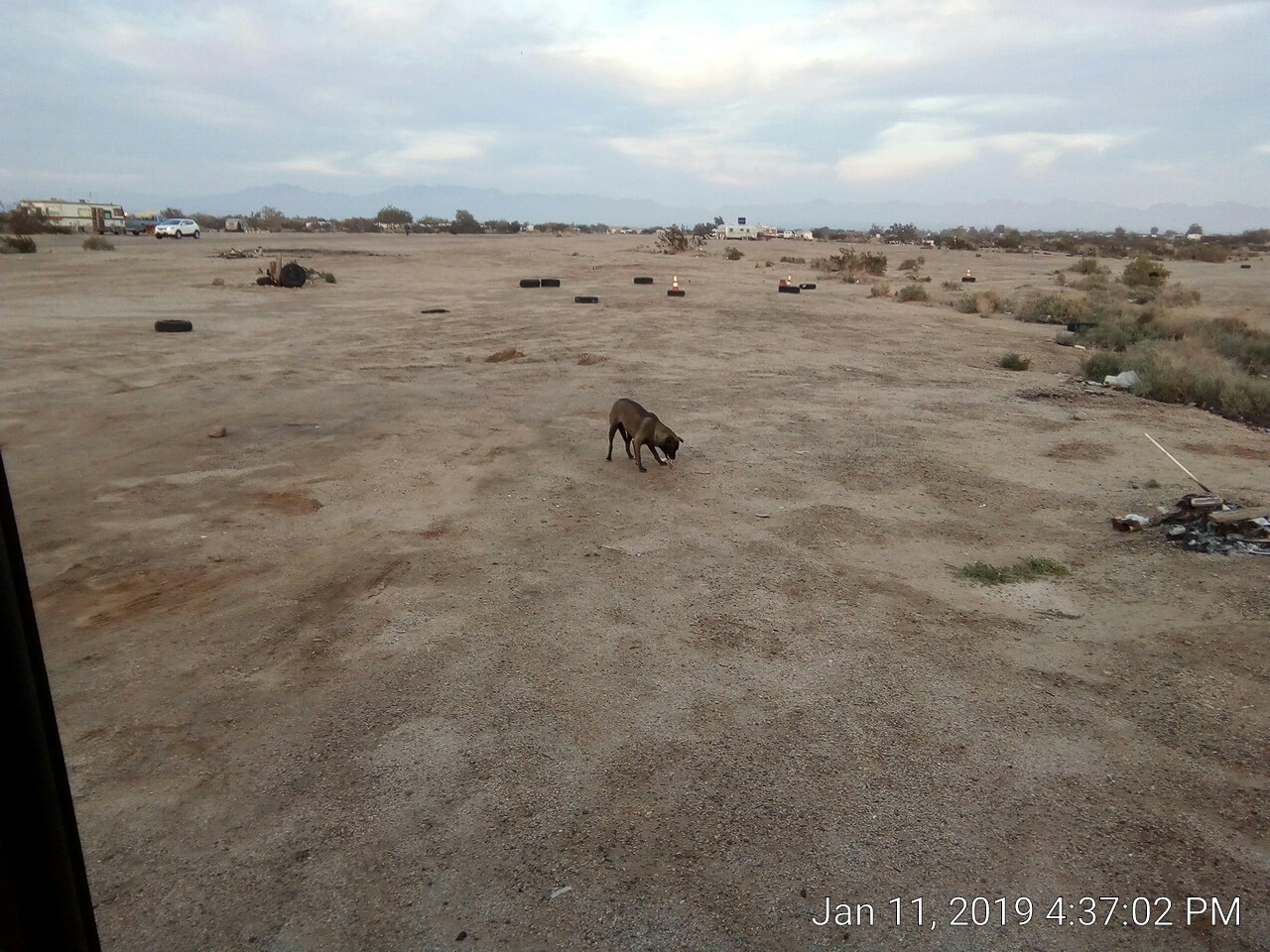Slab City
After the Salton Sea I headed a few miles away to Slab City (aka the Slabs), sometimes called the Last Free Place in America.
The site is both decommissioned and uncontrolled... the site is described by its inhabitants and news outlets like Vice News as a miniature de facto enclave of anarchy.
Note: I do not judge “anarchy” to be pejorative as a member of the general public might.
My thoughts here will be cursory and impressionistic. I think the Slabs, in both theory and practice, will bake in the back of my mind for a long time.
Impressions
I am a fan of guerilla capitalism, unofficial trade that occurs in tiny pockets of opportunity. Système D, gray/black markets, kids’ lemonade stands, food carts, etc. Lots of that on display. When the barriers to market entry are low (1. put stuff out, and 2. sell it) people can sell art or objects that would usually be unsellable. Rocks, handmade jewelry, whatever.
Residents often arranged their housing on unofficial “streets” with street names, and sometimes street numbers on their housing.
Art was omnipresent. Some of it like the painted tv screens in East Jesus were truly compelling and subversive.
Everyone I met was friendly and open. All made a point of inviting me to community events.
I met the Slabs dog wrangler, a volunteer who coordinates free vaccines from local vets and the spay/neuter operations. She came over because a gorgeous dog was hanging around my van:

She (the dog, not the wrangler) looked like an African wild dog or something. Dark face with amber eyes. She wasn’t skinny but I had some some iffy cold cuts in the fridge. Doggo made short work of them.
The dogs tentative approach, my offer of food, and the wary dance that followed put me in mind of how the original dogs were integrated into human life. I really think there is a special and symbiotic bond between dogs and people.
The tires in the background aren’t random; they are trail markers that keep folks on firm ground and out of the “sugar sand” that swallows cars. There is a lot of scrap out there; most of it is ancient tin cans and 1960s-looking car chassis. Some is the detritutus of human life.
The main place I wanted to visit i the Slabs was The Library. There were Old west-style wooden pointer signs on posts directing one to the more common destinations. As I got closer the signs started to give the street name and number of the library.
The Library was well-stocked with books and staffed by a young woman who was the embodiment of what medieval barmaids must have been: earth mother, capable, confident. While I was there she was involved in a conversation about a Slabber who was poorly behaved when drunk. She turned to me and said “we keep our own in line”.
As it should be. I think I will spend more time in the Slabs in the coming years whenever I am in that area.